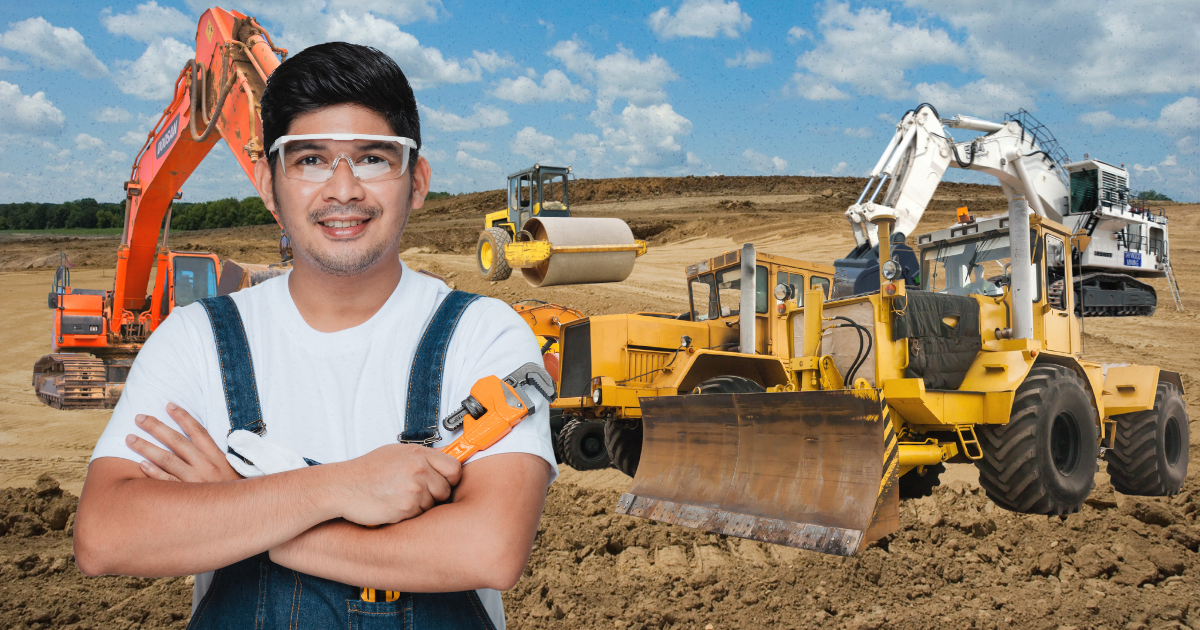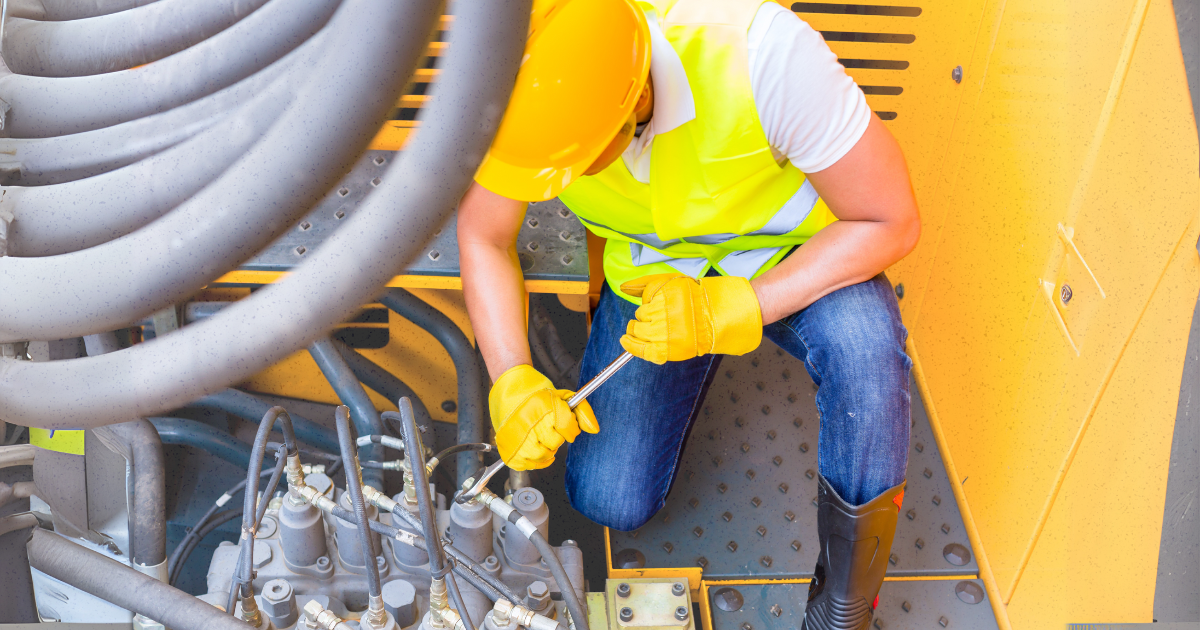Construction vehicles are essential for tackling tough jobs on-site. They lift, dig, and clear with power and precision. But without regular maintenance, these machines can quickly become expensive problems.
Breakdowns lead to costly repairs and project delays. Proper care keeps your equipment running smoothly and protects your investment for years to come. In this article, we will list down the most common heavy machinery on construction sites and share eight practical ways to maintain your construction vehicles and ensure they stay in peak condition for every job.

Understanding Heavy Equipment Essentials
Construction sites rely on various machines, each designed for specific tasks that keep projects moving efficiently. From digging and lifting to transporting and compacting, every piece of equipment has a vital role—and unique maintenance needs.
Here’s a quick look at some of the most important construction vehicles and what they do:
- Excavators: Essential for digging, demolition, and lifting, with a focus on hydraulic system maintenance.
- Backhoes: Versatile machines with digging buckets and front loaders, requiring regular checks on hydraulic arms.
- Bulldozers: Powerful earthmovers that push debris and soil, needing frequent inspections of tracks and blades.
- Trenchers: Used for digging trenches for pipelines and cables, with cutting chains that need regular sharpening.
- Loaders: Designed to transport materials like soil and debris, requiring attention to buckets and hydraulic systems.
- Tower Cranes: Critical for lifting heavy materials to high places, with cables and booms needing routine inspections.
- Dump Trucks: Transport materials across sites, with brakes, tires, and hydraulic beds needing regular checks.
- Compact Rollers (Drum Rollers/Road Rollers): Used for compacting soil and asphalt, with drum vibrations and bearings needing consistent monitoring.
- Telehandlers: Versatile lifters for moving materials with extendable arms, requiring attention to hydraulics and attachments.
- Scissor Lifts: Ideal for elevating workers, with platforms and safety mechanisms needing regular inspection.
Related read: Planning to Start Your Construction Company in 2025? Check out this must-have construction equipment.
These heavy machines are always exposed to heavy loads, rough surfaces, and strong impacts that can cause damage. This makes it crucial to monitor their usage on-site. On top of that, regular checkups and maintenance are key to ensuring they stay in top shape and continue running smoothly for the long haul.
8 Ways to Take Care of Construction Vehicles

Proper maintenance of construction vehicles is key to keeping them running smoothly and preventing costly repairs. Each machine, from excavators to scissor lifts, has unique maintenance needs that should be addressed regularly.
Here’s a breakdown of how to take care of these essential vehicles on the job site.
1. Conduct Regular Inspections
Stay ahead of problems by checking for leaks, cracks, and worn-out parts, especially in hydraulics, tires, and tracks. Using inspection checklists ensures no detail gets overlooked.
2. Follow Proper Lubrication Practices
Keep all moving parts well-lubricated to prevent friction and reduce wear. Stick to the oils and greases recommended by the manufacturer for best results.
3. Keep Vehicles Clean
Dirt, debris, and corrosive materials can cause major damage over time. Clean vehicles regularly, paying extra attention to air filters and radiators to prevent overheating.
4. Monitor Fluid Levels
Check engine oil, coolant, and hydraulic fluid regularly to keep everything running smoothly. Replace fluids on schedule to prevent mechanical failures.
5. Rotate Tires and Check Tracks
Keep tires in good shape by rotating them and checking pressure levels. If your vehicles use tracks, monitor their tension and alignment to avoid wear and tear.
6. Store Equipment Properly
Protect vehicles from extreme weather by using shelters or covers. If you’re storing them long-term, drain the fuel to prevent damage.
7. Train Operators Effectively
A well-trained operator can make a huge difference. Provide regular training to ensure safe handling and reduce accidents caused by misuse.
8. Schedule Preventive Maintenance
Don’t wait for something to break. Follow the manufacturer’s service intervals and use telematics to monitor performance and schedule timely repairs.
Protect Your Investment with Proper Maintenance
While it is important to invest in good, sturdy, heavy machinery for your construction projects, that doesn’t mean that they do not need proper care and maintenance on a regular basis.
Your construction vehicles need more than just a quick wash and a fresh coat of paint—they’re investments, and taking care of them means preventing costly breakdowns. Regular inspections, proper lubrication, and preventive maintenance are the keys to keeping your machines running smoothly for years.
Simple habits, like operator training and proper storage, can also help reduce downtime and repair costs. And let’s not forget about regular maintenance—it’s essential for catching any potential issues before they turn into bigger problems. Make these eight practices a part of your routine, and your construction vehicles will stay reliable, keeping your projects on track.
References
The Constructor. (n.d.). 16 Types of Heavy Equipment Used in Construction. The Constructor. Retrieved February 17, 2025, from https://theconstructor.org/construction/heavy-construction-equipment-types/26305/
Empire Cat. (n.d.). 25 Types of Heavy Construction Equipment and Their Uses. Empire Cat. Retrieved February 17, 2025, from https://www.empire-cat.com/company/news/25-types-of-heavy-construction-equipment
GoCodes. (n.d.). Tips for Taking Care of Your Heavy Duty Equipment. GoCodes. Retrieved February 17, 2025, from https://gocodes.com/heavy-equipment-care/










